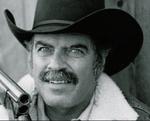Of all the most commonly hunted big game species in the west, elk are the hardest to find. That might be a tough pill to swallow, because elk are everywhere - from sagebrush flats to the highest peaks. So why are they so difficult to locate? Primarily because they live in herds in big country. They can be in a variety of habitats but they can also be absent from much of that landscape. Finding them can take many days, even weeks, especially in heavily timbered mountains.
One way to find them more easily is to hunt private land where there are fewer hunters. Some of those lands are ranches cultivated with crops that attract elk, which is another reason why they’re more readily located. But hunting those private lands may cost you more money than you can afford. Many ranchers lease their lands to outfitters or lease it themselves. While hunter success is typically higher on private lands, with some exceptions, your option for a more reasonably priced hunt is to do a DIY hunt on public land — which brings us around to the original question — how do you know where to hunt? Of course, if you’re willing and able to pay for an outfitter, the problem is solved.
But how about a drop camp? This is a camp that’s established by an outfitter, typically on a national forest. He sets up tents and takes you in on horses. Then he leaves and you’re on your own. After the hunt he picks you up and transports you and your elk out. Drop camps are not only much less expensive than the outfitter’s fully guided hunts but also appeal to hunters who enjoy doing things on their own. They’d rather make their own decisions rather than following a guide.

This sounds like the perfect answer to those who want a DIY hunt — but are there pitfalls? Indeed. There may be enough negatives to turn your hunt into a nightmare. Let’s explore what it takes for a drop camp to be successful.
First, the camp should have tents that are in decent shape with no tears, holes, and they should be leakproof. I’ve seen tents that were flimsy and offered little shelter in bad weather. Remember, you’re at the mercy of the outfitter. A good night’s sleep is a must when you’re hiking and hunting all day in the mountains, especially if you live in low elevations and aren’t accustomed to thin air in the higher altitudes.

A good camp should have cots. Sleeping on the ground may work for you, but it’s not much fun if you’re lying on rocks, tree roots and pine cones. It’s a good idea to bring your own foam pad to sleep on. It will keep you much warmer at night, even if you’ve brought a sleeping bag that’s rated for very cold weather. Loft means everything in a bag. When you lie down the loft compresses, allowing the cold air under the cot to penetrate. The foam pad insulates you and solves the problem. That brings up a point about sleeping bags. Just because your tent has a heater doesn’t mean you can bring a summer bag. Night temperatures typically plummet quickly when the sun goes down. You’ll soon learn that without heat the temperature of the air inside the tent will quickly equal the temperature outside.
Most camps are supplied with some sort of heat source, typically a portable wood stove which can be disassembled and packed on horses. A propane heater might also be provided. For safety’s sake, units should be the type for indoor use. Be certain you follow the rules on the heater. A good supply of firewood should be stacked next to the tent if a wood stove is used. An axe or splitting maul is necessary if the wood is in the form of round logs.
A cook stove is also required, whether it’s a portable two burner Coleman fueled by propane or the top of the wood stove itself.
A light is necessary in the tent. Best option is a lantern that hangs in the center and illuminates the entire inside. A battery operated, propane or white gas lantern can be used. Though white gas is cheaper, it’s also more dangerous. Liquid can spill and the lantern can ignite if improperly used. Small propane tanks are bulky and take up far more space.
A small table is ideal for preparing meals if there’s room. Cookware and plastic flatware is also usually provided as is disinfectants and cleansers. Paper towels and toilet paper should also be available.
Water may or may not be close by. Ideally, camp should be located near a spring, creek or lake where you can obtain water which must be boiled before use or treated with purification tablets. If water isn’t nearby you may need to pack in enough water for your needs.
Food is, of course, a major issue. In most cases you need to bring your own food and beverages.

Obviously, a great deal of consideration and planning goes into a drop camp hunt. It’s a wise idea to make up a list of all the gear required and discuss with the outfitter before the hunt.
Little things that are missing or broken can throw a monkey wrench in the hunt. Here are situations that actually happened. There was no propane for the lantern. Hunters had to use head lamps and flashlights in the tent. There was no skillet, just a saucepan, which made meals tough to prepare. The axe handle was broken and firewood had to be split to fit into the wood stove. Hunters had to break branches by hand which burned quickly in the stove, offering no heat on cold nights. And so on.
These are all camp issues. How about the hunt itself? If you’re hunting out of a drop camp with a reputable guide you should have a decent chance of scoring. But suppose the outfitter puts the drop camp in a marginal area where there are few or no elk. He may not want your party to compete with his high-dollar clients who are camping in the best spot, so the drop camp may be dozens of miles away. Also, drop camp hunters are typically folks who expect to rough it. Suppose the camp is in a great area — the hunters learn it and continue to return in later years on their own, directly competing with other drop camp hunters. These scenarios aren’t the norm but happen enough to be a problem.
If you see a hunter at a show advertising drop camps and you ask him where it’s located before booking with him, don’t expect him to pinpoint the location. He’s likely to think you’re tire kicking and looking for information with no intention of booking. But if you ask him in general terms where he hunts he’s more apt to tell you. Then you can do a bit of research to determine the elk hunting details in the area.
Other items that need to be discussed is the transportation of meat to the trailhead. The outfitter may require you to move your elk from the site of kill to camp, which can be a major chore. Or, a guide will come in with packhorses and check on you every other day or so to see that all is well and pack out meat. In some areas with cell service the guide may not come in unless he’s called.
Be prepared to care for your elk meat properly, whether it’s boned or quartered. Use Caribou Gear Game Bags and other gear to keep it clean, free of bugs, and cool.

You do your planning thoroughly you might find that your drop camp hunt was the answer to a fine hunt with a far more reasonable price tag than a fully outfitted hunt and, very importantly, you can enjoy it with your best friends.















You didn’t mention the cost of these drops Camps vs just hiring a guide? Drop camps sounds inviting when going out of State ! Is there a way to check a guides credentials ?